Pizza is a favorite dish all over the world, and while the toppings get a lot of attention, the sauce is just as important. But should you cook your tomato sauce when making a pizza at home? If you've ever wondered this, you needn't worry or wonder any longer. We've done the research to solve this delicious dilemma.
Whether to cook your pizza sauce or not is up to you! Traditional, Neapolitan pizza uses an uncooked sauce with just canned tomatoes and salt. For a more American-style sauce or to infuse more flavors, such as onion, into your sauce, you can cook it on the stove.
In this article, we'll take a closer look at cooked and uncooked tomato sauces. You'll see the advantages and disadvantages of both as well as what kinds of pizzas they're most suited for! We'll also take a closer look at fresh and canned tomatoes so you'll have the right ingredients to get your sauce started. Read on to learn more!
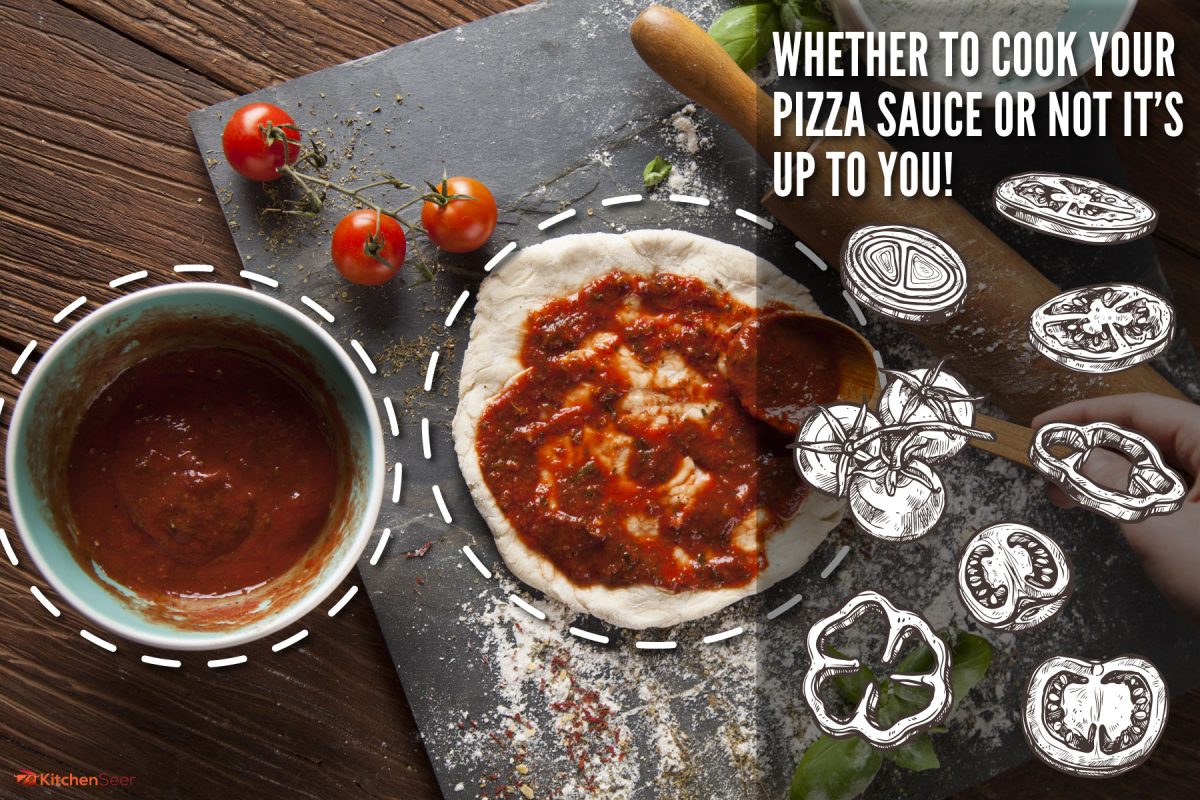
Pizza Sauce: To Cook or Not To Cook?
For as widely-loved as pizza is, it's also a dish that many people have very strong opinions about. From the right kind of cheese to use to whether or not pineapple is an acceptable topping, pizza is a minefield of culinary controversy. One of these areas of debate is the sauce, specifically how to flavor it and whether to cook it.
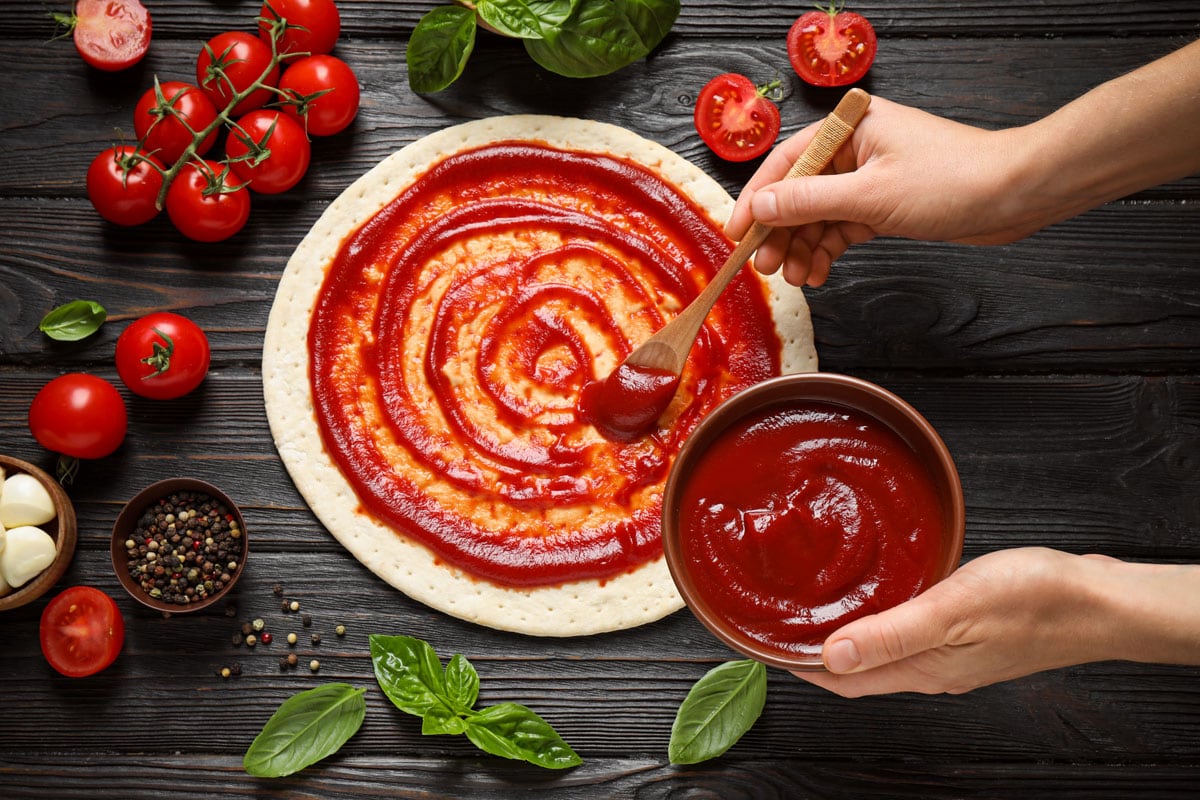
We believe that there are many paths to pizza perfection and that both raw and cooked sauces can be used to make excellent pizzas. Instead of trying to convince you that one way is correct and that all others are a form of heresy, let's take a look at the characteristics, methods, and uses of both raw and cooked pizza sauce.
The Original: Uncooked Pizza Sauce
We often think of old-fashioned methods as being more labor-intensive and less convenient than the modern way. When it comes to pizza sauce, though, the opposite is actually true! Leaving your sauce uncooked is the most traditional way to make a pizza.
But don't take our word for it. The Associazione Verace Pizza Napolitana is an organization that sets rules for what counts as authentic Neapolitan pizza. Their strict, prescriptive rules call for "pressed peeled tomatoes," no cooking required.
A Blessing and a Curse
Following this approach means that your sauce will have the truest flavor of your tomatoes. This can be a blessing or a curse. Sometimes lower-quality canned tomatoes have a, for lack of a better word, canny taste. That flavor is more likely to come through in an uncooked sauce with minimal additional flavors.
On the other hand, if you opt for high-quality canned tomatoes, you'll get to appreciate their flavor more than you would if you cooked it down with a bunch of other flavorings.
DOP San Marzano tomatoes are a popular choice for many, as these are carefully regulated to assure high quality. They do come at a premium, though, and there are cheaper options that taste great available too. We'll take a closer look at choosing tomatoes for your sauce later.
How and When to Use Uncooked Pizza Sauce
This sauce is super easy to make. Simply blend high-quality whole, peeled tomatoes with a little bit of salt and voila! If you want, you can add a little extra flavor to the sauce, including olive oil, garlic, or even a touch of balsamic vinegar like in this recipe from The Kitchn.
As you might expect, this is the ideal kind of sauce to use for a traditional Neapolitan pizza. If you are cooking in a wood-burning pizza oven or a blazing-hot oven with a pizza stone or steel, try using this traditional sauce.
The New Normal: Cooked Sauce
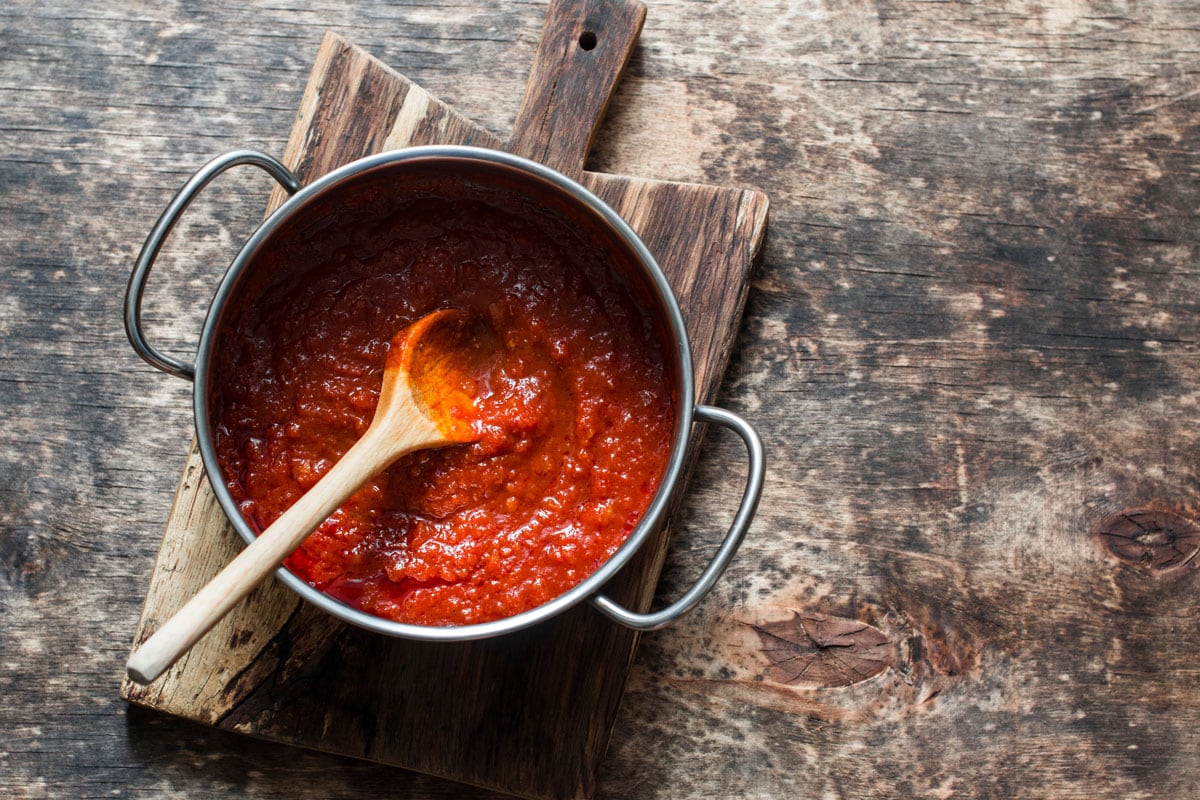
While your traditional sauce might not take any cooking, odds are most of the pizza you've had uses a cooked sauce. Cooked sauces are the go-to for most pizza chains and for many home cooks. This is also the type of sauce used in New York-style pizza, which evolved from Neapolitan pizza.
Thick and Flavorful
Where an uncooked sauce puts the tomato front and center, a cooked sauce lets you add in more additional flavors. These sauces often include basil, oregano, garlic, onion, red pepper, a touch of sugar, or more.
Even without adding in other flavors, cooking down the sauce thickens it and develops some more sweetness in the tomatoes. All of this together leads to a flavorful, almost jammy sauce.
You don't need to dish out the big bucks on your tomatoes when making a cooked sauce because some of the fresh flavors will be lost. That being said, still go for a high-quality product. You can cook out and cover up a little bit of the canny flavor from the cheap cans, but you'll have a much nicer sauce starting with good tomatoes.
How and When to Use Cooked Pizza Sauce
Because cooked pizza sauce is more complex and offers more opportunities for customization, there's no single method for it. This recipe for New York-style sauce, from Serious Eats, is a good place to start. It has the classic cooked sauce flavors, including basil, oregano, onion, and garlic.
This recipe from Budget Bytes ups the tomato flavor by adding in tomato paste along with crushed tomatoes. The puree will also get you a thicker sauce faster.
Use a cooked tomato sauce when you are making more American-style pizzas, such as New York, Chicago, or Detroit-style pizzas as well as those more similar to American pizza chains.
Should You Use Fresh or Canned Tomatoes for Pizza Sauce?
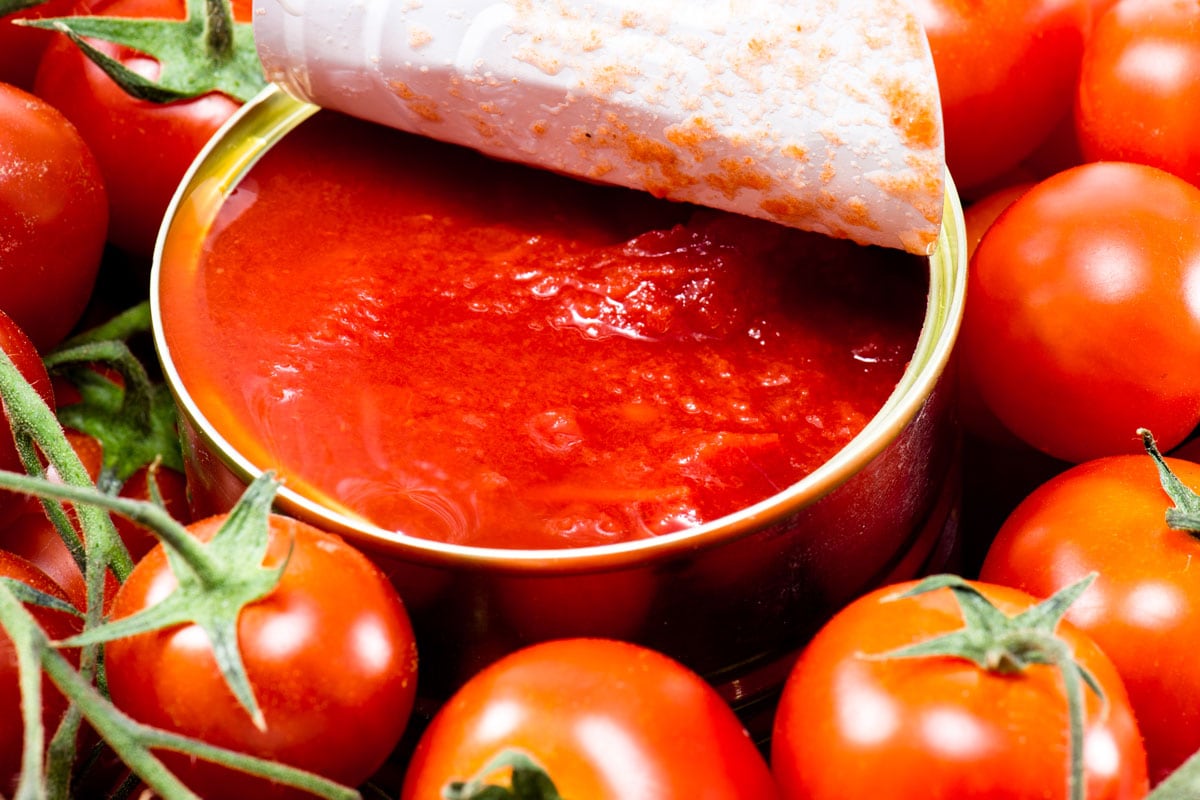
You may have noticed that the recipes and tips we've offered so far all have this fact in common: they all use canned tomatoes. Many people assume that "fresh" means "better" and would expect a pizza sauce made with fresh tomatoes to outperform those with canned tomatoes. This, however, is rarely the case.
There are a few reasons for this. The first, and most important, is that canned tomatoes are processed when tomatoes are in season. This means that they are preserved at peak flavor. These days, fresh tomatoes are available all year long, even when out of season. If you've ever tried a fresh tomato that feels ripe only to find it's mealy and flavorless, this is likely why.
Even when fresh tomatoes are in season, it can be hard to find the best varieties at the supermarket. If you have a good grocer (or even better, grow your own tomatoes) you can definitely make an awesome pizza sauce with fresh tomatoes! There are a number of great recipes available online, like this one from The Parent Spot.
If you don't have access to awesome fresh tomatoes, though, a good can of tomatoes will make a better sauce nine times out of ten.
How to Choose Canned Tomatoes for Pizza Sauce
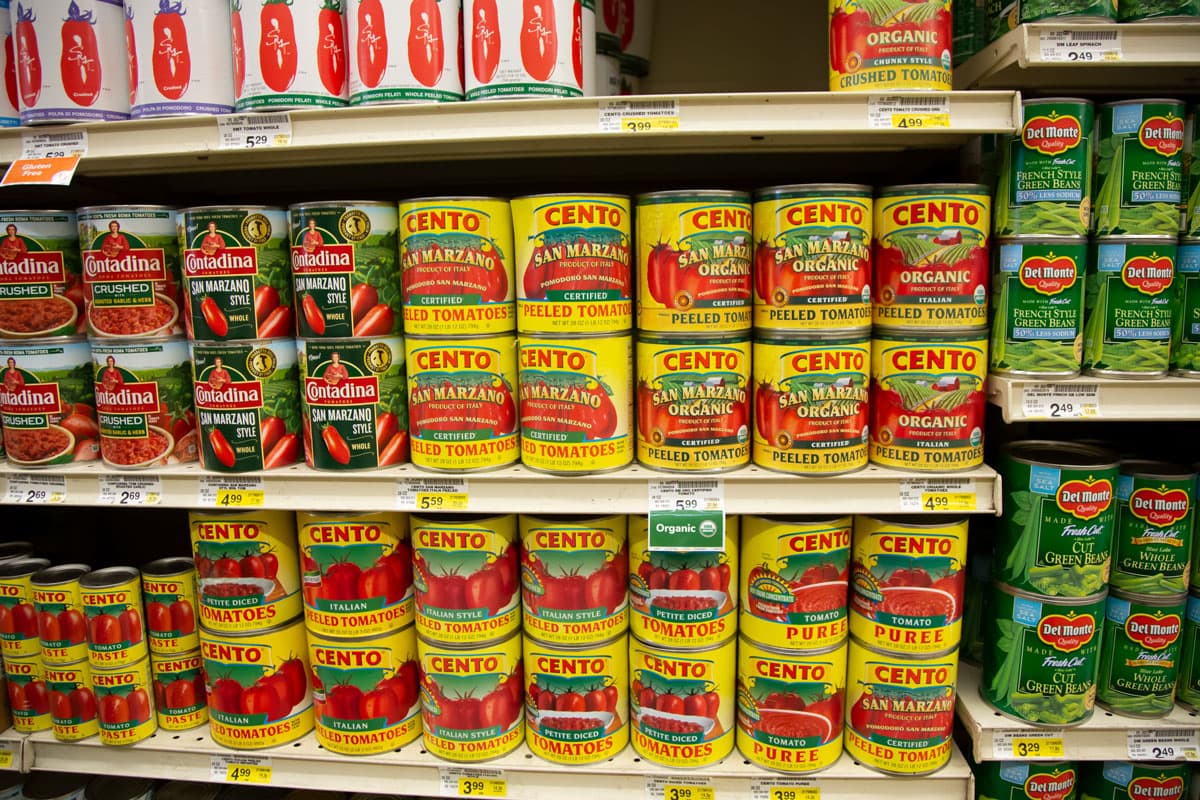
The best sauce will be made with the best tomatoes, but, with so many options available, it can be difficult to know where to start. We have some tips for you to help you get the most for your money when choosing your tomatoes.
Avoid Canned Tomatoes with Calcium Chloride
When you buy canned tomatoes, check out the ingredients. If they contain calcium chloride, you may want to avoid them.
Calcium chloride is often added to canned tomatoes and other products so they'll maintain their shape better. This can make them look nicer, but affects the texture of the tomato in a way that doesn't work well for sauces. It may also add to the canniness of the taste.
Buy Whole, Peeled Tomatoes
While it may seem crazy to buy whole tomatoes when you want to make a sauce, it's usually your best bet. There are a few reasons for this.
First, whole tomatoes are less likely to contain the calcium chloride mentioned above than, say, diced tomatoes. This will give them a better texture for sauces.
Also, damaged tomatoes are more likely to be used in cans of diced or crushed tomatoes than they are whole. This helps you get a higher-quality tomato.
It's easy enough to crush whole tomatoes by hand for making a sauce (not to mention it's satisfying, good fun). You can still make great sauces with cans of crushed tomatoes, but you'll likely get better value for your dollar going with whole.
Look for Tomatoes Canned in a Thick Liquid
When you open a can of whole tomatoes, they're suspended in a liquid. Depending on the brand you buy, this can be a watery tomato juice or a thick tomato purée. Go with the thick stuff.
This will create a sauce with a nice texture better (especially for uncooked sauces). You don't want a watery sauce soaking your pizza.
You can check the ingredients and see if they list tomato puree instead of tomato juice. That said, some brands that list tomato juice will still have a thick liquid, so it can take some trial and error to find one that works. Remember that the more watery the liquid is, the more money you're evaporating for water instead of tomato.
San Marzano Are a Safe Bet, But Taste Around
We mentioned San Marzano tomatoes earlier, and you may have heard other cooking personalities talk about them too. The truth is, they do live up to the hype. True San Marzano tomatoes are fantastic and make excellent sauces. But, there's more to it than that.
First, the US has more relaxed labeling restrictions than Italy does. You can find many cans labeled "San Marzano" or even "Certified San Marzano" in the US that do not qualify for the DOP label. If you want the real deal, make sure it says DOP on the label, like with these San Marzanos below.
Click here to see these DOP San Marzano Tomatoes on Amazon.
Keep in mind that you will pay a premium for these high-quality tomatoes. There are other great tomatoes on the market that make excellent sauce at a fraction of the price. Have some fun, try out some different types, and see which ones you prefer. You may even find that you like some more affordable options more than the fancy stuff!
Buon Appetito
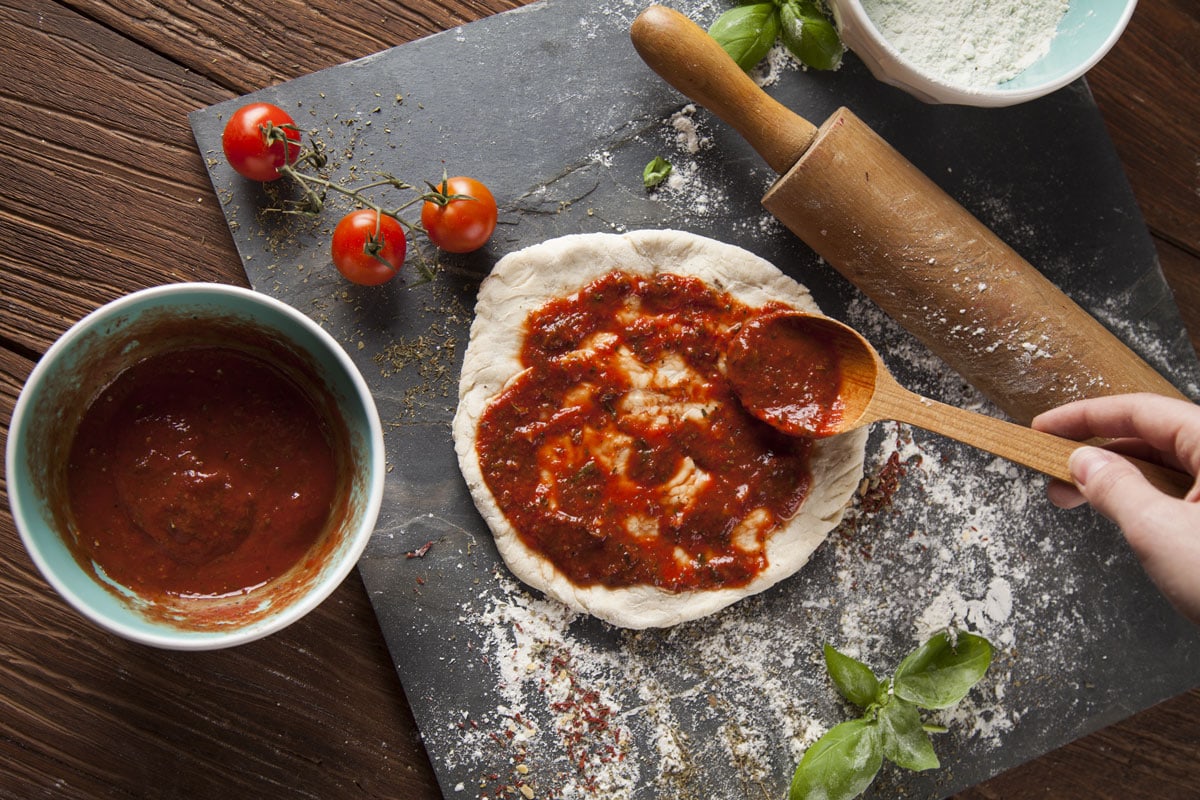
All roads may lead to Rome, but there are plenty of paths to Neapolitan nirvana too. Whether you choose to cook your sauce or leave it raw, go for San Marzano tomatoes or a more affordable option, you'll be well on your way to a tasty pizza pie.
Now you know more about these issues and how to make that sweet sauce for your pizza. If you found this article helpful, check out these informative posts:
Should You Preheat A Pizza Stone?
How Long To Cook Pizza In The Oven?







![Oven roasted cherry tomatoes. How Long To Roast Tomatoes [A Look At Various Factors & Considerations]](https://kitchenseer.com/wp-content/uploads/2021/08/Oven-roasted-cherry-tomatoes.-How-Long-To-Roast-Tomatoes-A-Look-At-Various-Factors-Considerations-250x250.png)